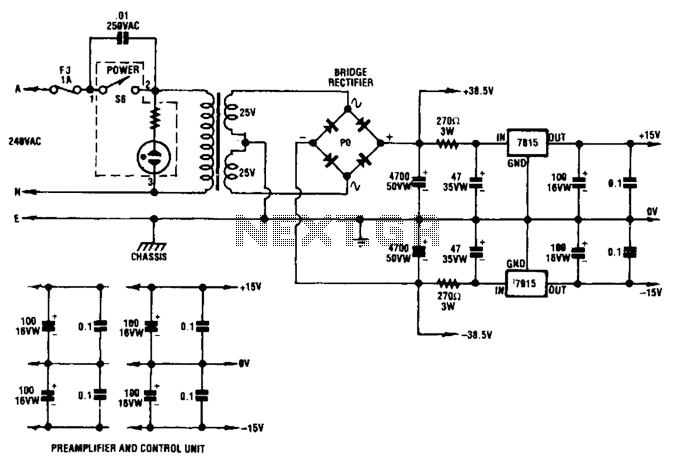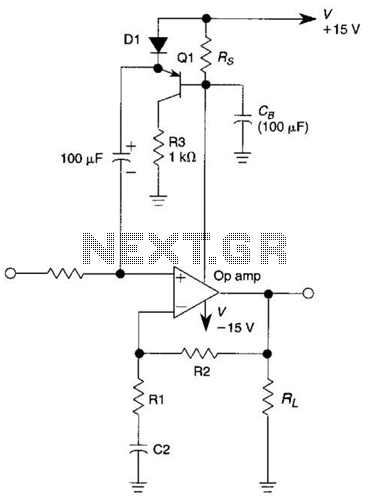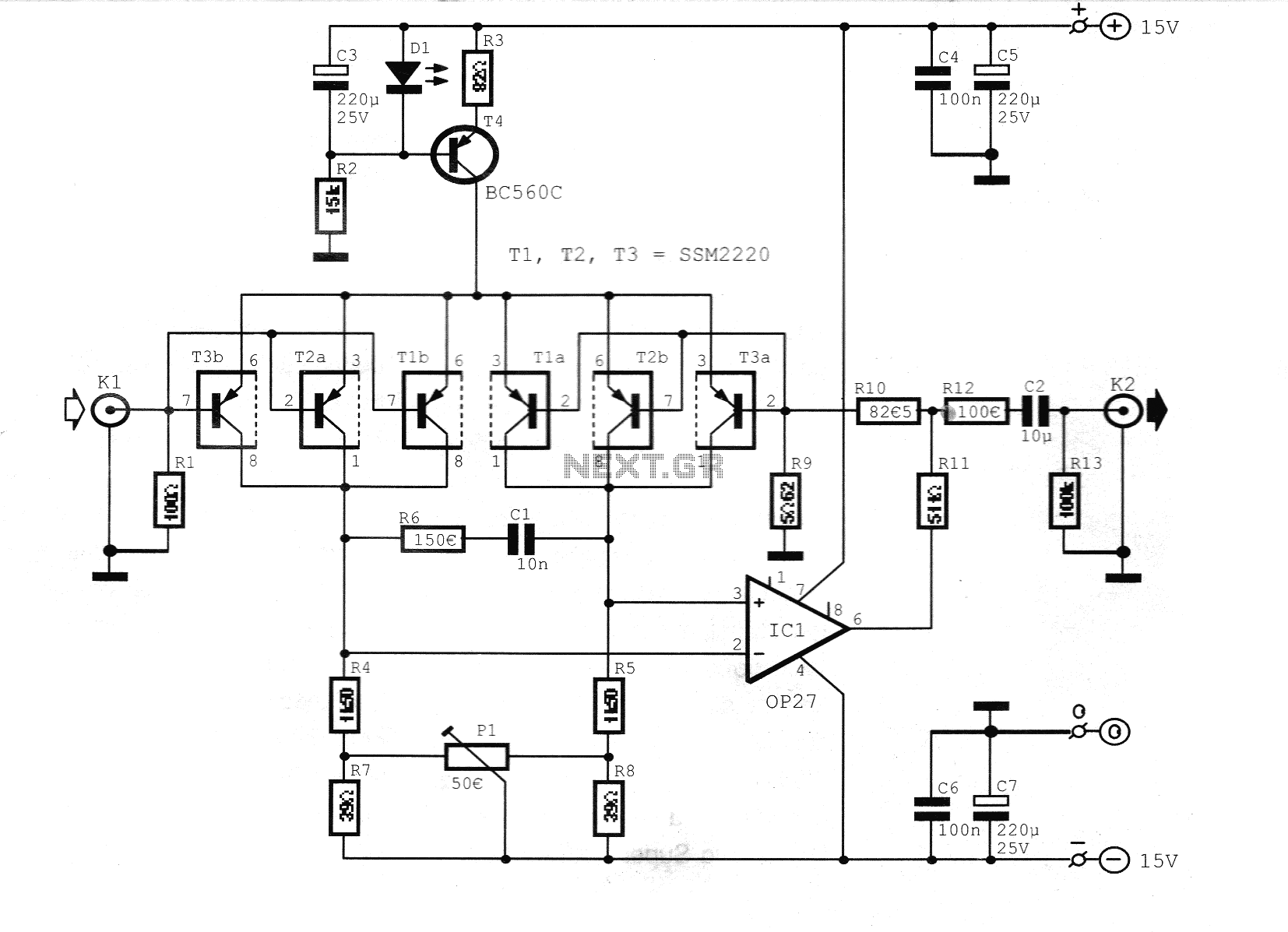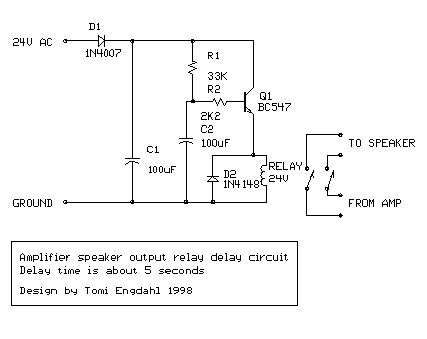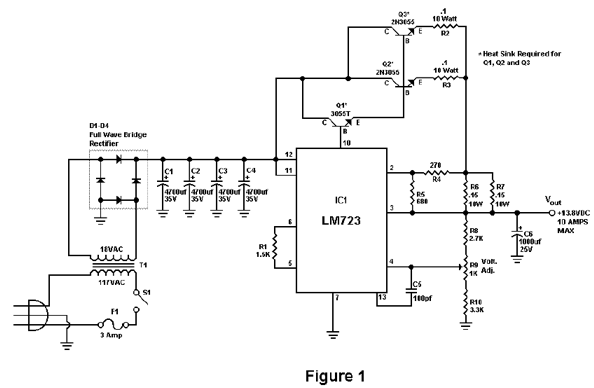
Audio Equalizer Circuits
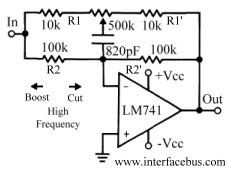
This discussion continues from the audio tone control topic, which introduced both passive and active tone controls. The follow-up topics may include a 2-Band Active Tone Control or a 3-Band Active Tone Control. An audio equalizer is utilized to adjust the amplitude of one or more frequency bands. The actual circuit provides equalization similar to the tone controls. The circuits are alike and use the same terminology to indicate amplification (boost) or attenuation (cut). There is not much difference between the two classes of circuits. Both circuits below indicate the use of an LM741 operational amplifier; however, any general-purpose operational amplifier could be used instead of the 741. The LM741 is merely a representation that any such amplifier might be employed. Furthermore, no pin numbers are specified in the circuit diagrams, allowing for the use of single, dual, or quad package Op-Amps. Two operational amplifier circuit schematics are provided below, both based on a non-inverting amplifier design. The LM741 (uA741) is configured as a unity gain amplifier, with Rf and Ri shown as equal values. The gain of an inverting amplifier is Rf/Ri, or in this case R2/R2 (ignoring other passive components for the moment). A Shelving Equalizer derives its name from the frequency response curve achieved by the circuit, resembling stacked shelves. There are two types: a high-pass Shelving Equalizer (which passes all frequencies above a certain threshold) and a low-pass Shelving Equalizer (which passes all frequencies below a certain threshold). Both low and high pass equalizers are illustrated below. The first circuit is arranged to function as a high-frequency equalizer, passing all signals without altering gain up to a specific frequency. The default gain of the amplifier is set to unity gain (1). The frequency at which the equalizer either adds gain (boost) or applies attenuation (cut) is determined by the equation: 1 / (2 * π * R2 * C1). The parameters in the equation are set to yield a frequency of 2 kHz. The second circuit operates similarly to the first but at the opposite end of the frequency range, passing all low frequencies up to a cut-off frequency (essentially functioning as a low-pass filter). The equation for calculating the cut-off frequency remains the same: 1 / (2 * π * R2 * C1). The component values in this circuit will produce a cut-off frequency of 200 Hz. A standard linear potentiometer is recommended for controlling the equalizer, differing from other audio controls like volume control, which typically uses an audio taper (logarithmic). However, it is the same type of adjustable resistor utilized in bass or treble controls. Typically, when used on a front panel, the potentiometer features a linear control that moves back and forth in a straight line rather than rotating left or right. The linear movement of the control should not be confused with the linear value change of a taper. The resistor value ratio should remain constant: the amount of change (boost or cut) is determined by the ratio of input and feedback resistance, R2, R3 / R1, R2.
The audio equalizer circuits described utilize operational amplifiers configured in a non-inverting amplifier topology, allowing for effective manipulation of audio signals. The choice of the LM741 operational amplifier serves as a versatile option, but designers may choose other amplifiers based on availability or specific performance characteristics. Each circuit's gain is carefully controlled, ensuring that the audio signal can be adjusted without introducing unwanted distortion.
The high-pass and low-pass configurations enable selective frequency management, essential for tailoring audio output to suit various acoustic environments or listener preferences. The high-pass Shelving Equalizer allows frequencies above a defined threshold to pass through unaffected, while attenuating lower frequencies, thus enhancing clarity and definition in the higher frequency range. Conversely, the low-pass Shelving Equalizer permits lower frequencies to pass while cutting higher frequencies, ideal for achieving a warmer sound profile.
The equations governing the frequency response of these equalizers highlight the importance of component selection, specifically the resistors and capacitors, in determining the cut-off frequency. By adjusting these values, designers can customize the performance of the equalizer to meet specific audio requirements. The use of a linear potentiometer for control provides precise adjustment capabilities, allowing for fine-tuning of the equalization settings, which is critical in professional audio applications.
Overall, these audio equalizer circuits represent a fundamental aspect of sound engineering, providing essential tools for audio manipulation and enhancement. The combination of operational amplifiers, carefully chosen passive components, and user-friendly controls results in a versatile and effective solution for achieving desired audio characteristics.This discussion continues on from the audio tone control topic, which introduced both passive and active tone controls. The follow on topics might be a 2-Band Active Tone Control, or the 3-Band Active Tone Control. An audio equalizer is used to adjust the amplitude of one or more frequency bands. The actual circuit adds equalization just as the tone controls did. The circuits are similar and use the same terms to indicate an amplification [boost] or attenuation [cut]. In fact there isn`t much difference between the two classes of circuits. Both of the circuits below indicate that they use a LM741 operational amplifier, but like all of these Op-Amp circuits any amplifier could be used instead of the 741.
The LM741 is just used to indicate that any general purpose operational amplifier might be used. In addition, no pin numbers are provided in the circuit diagrams so a single, dual or quad package Op-Amp could be used. Two operational amplifier circuit schematics are provided below. Both circuits are based on a non-inverting amplifier design. The LM741 [uA741] are configured as a unity gain amplifier, as Rf and Ri are shown as the same value.
The gain of an inverting amplifier is Rf/Ri, or in this case R2`/R2 [ignoring the other passive components for the moment]. A Shelving Equalizer gets its name from the frequency response curve the circuit achieves. The characteristic curves resemble stacked shelves. There are two types; a high-pass Shelving Equalizer (which passes all frequencies above a certain frequency), and a low-pass Shelving Equalizer (which passes all frequencies below a certain frequency).
Both low and high pass equalizers are shown below. The first circuit uses a component placement that configures it as a high frequency equalizer. The equalizer is configured to pass all signals with out adding or reducing gain up to a particular frequency. The default gain of the amplifier is set at unity gain (1). The frequency at which the equalizer with either add gain [Boost] to the signal, or attenuation [cut] to the signal is determined by the following equation: 1 / (2 * p * R2 * C1).
The values called out in the equation set the frequency at 2kHz. This second circuit operates as the first, but at the opposite end of the frequency range. The circuit will pass all low frequencies up to a cut-off frequency (basically a low-pass filter). The equation that calculates the cut-off frequency is the same as before; 1 / (2 * p * R2 * C1). The component values used in the circuit will produce a cut-off frequency of 200Hz. A standard linear potentiometer should be used to control the equalizer. This differs from other audio controls such as a volume control which would use an audio taper which is logarithmic; however it`s the same style adjustable resistor that would be used as a bass or treble control. Normally when used on a front panel the potentiometer has a linear control, that is it moves up and back in a straight line, not left or right in a circular movement.
The linear movement of the control should not be confused with the linear value change of a taper. The resistor value ratio should be kept constant: The amount of change [boost or cut] is determined by the ratio of input and feedback resistance; R2, R3 / R1, R2. 🔗 External reference
The audio equalizer circuits described utilize operational amplifiers configured in a non-inverting amplifier topology, allowing for effective manipulation of audio signals. The choice of the LM741 operational amplifier serves as a versatile option, but designers may choose other amplifiers based on availability or specific performance characteristics. Each circuit's gain is carefully controlled, ensuring that the audio signal can be adjusted without introducing unwanted distortion.
The high-pass and low-pass configurations enable selective frequency management, essential for tailoring audio output to suit various acoustic environments or listener preferences. The high-pass Shelving Equalizer allows frequencies above a defined threshold to pass through unaffected, while attenuating lower frequencies, thus enhancing clarity and definition in the higher frequency range. Conversely, the low-pass Shelving Equalizer permits lower frequencies to pass while cutting higher frequencies, ideal for achieving a warmer sound profile.
The equations governing the frequency response of these equalizers highlight the importance of component selection, specifically the resistors and capacitors, in determining the cut-off frequency. By adjusting these values, designers can customize the performance of the equalizer to meet specific audio requirements. The use of a linear potentiometer for control provides precise adjustment capabilities, allowing for fine-tuning of the equalization settings, which is critical in professional audio applications.
Overall, these audio equalizer circuits represent a fundamental aspect of sound engineering, providing essential tools for audio manipulation and enhancement. The combination of operational amplifiers, carefully chosen passive components, and user-friendly controls results in a versatile and effective solution for achieving desired audio characteristics.This discussion continues on from the audio tone control topic, which introduced both passive and active tone controls. The follow on topics might be a 2-Band Active Tone Control, or the 3-Band Active Tone Control. An audio equalizer is used to adjust the amplitude of one or more frequency bands. The actual circuit adds equalization just as the tone controls did. The circuits are similar and use the same terms to indicate an amplification [boost] or attenuation [cut]. In fact there isn`t much difference between the two classes of circuits. Both of the circuits below indicate that they use a LM741 operational amplifier, but like all of these Op-Amp circuits any amplifier could be used instead of the 741.
The LM741 is just used to indicate that any general purpose operational amplifier might be used. In addition, no pin numbers are provided in the circuit diagrams so a single, dual or quad package Op-Amp could be used. Two operational amplifier circuit schematics are provided below. Both circuits are based on a non-inverting amplifier design. The LM741 [uA741] are configured as a unity gain amplifier, as Rf and Ri are shown as the same value.
The gain of an inverting amplifier is Rf/Ri, or in this case R2`/R2 [ignoring the other passive components for the moment]. A Shelving Equalizer gets its name from the frequency response curve the circuit achieves. The characteristic curves resemble stacked shelves. There are two types; a high-pass Shelving Equalizer (which passes all frequencies above a certain frequency), and a low-pass Shelving Equalizer (which passes all frequencies below a certain frequency).
Both low and high pass equalizers are shown below. The first circuit uses a component placement that configures it as a high frequency equalizer. The equalizer is configured to pass all signals with out adding or reducing gain up to a particular frequency. The default gain of the amplifier is set at unity gain (1). The frequency at which the equalizer with either add gain [Boost] to the signal, or attenuation [cut] to the signal is determined by the following equation: 1 / (2 * p * R2 * C1).
The values called out in the equation set the frequency at 2kHz. This second circuit operates as the first, but at the opposite end of the frequency range. The circuit will pass all low frequencies up to a cut-off frequency (basically a low-pass filter). The equation that calculates the cut-off frequency is the same as before; 1 / (2 * p * R2 * C1). The component values used in the circuit will produce a cut-off frequency of 200Hz. A standard linear potentiometer should be used to control the equalizer. This differs from other audio controls such as a volume control which would use an audio taper which is logarithmic; however it`s the same style adjustable resistor that would be used as a bass or treble control. Normally when used on a front panel the potentiometer has a linear control, that is it moves up and back in a straight line, not left or right in a circular movement.
The linear movement of the control should not be confused with the linear value change of a taper. The resistor value ratio should be kept constant: The amount of change [boost or cut] is determined by the ratio of input and feedback resistance; R2, R3 / R1, R2. 🔗 External reference
Warning: include(partials/cookie-banner.php): Failed to open stream: Permission denied in /var/www/html/nextgr/view-circuit.php on line 713
Warning: include(): Failed opening 'partials/cookie-banner.php' for inclusion (include_path='.:/usr/share/php') in /var/www/html/nextgr/view-circuit.php on line 713
